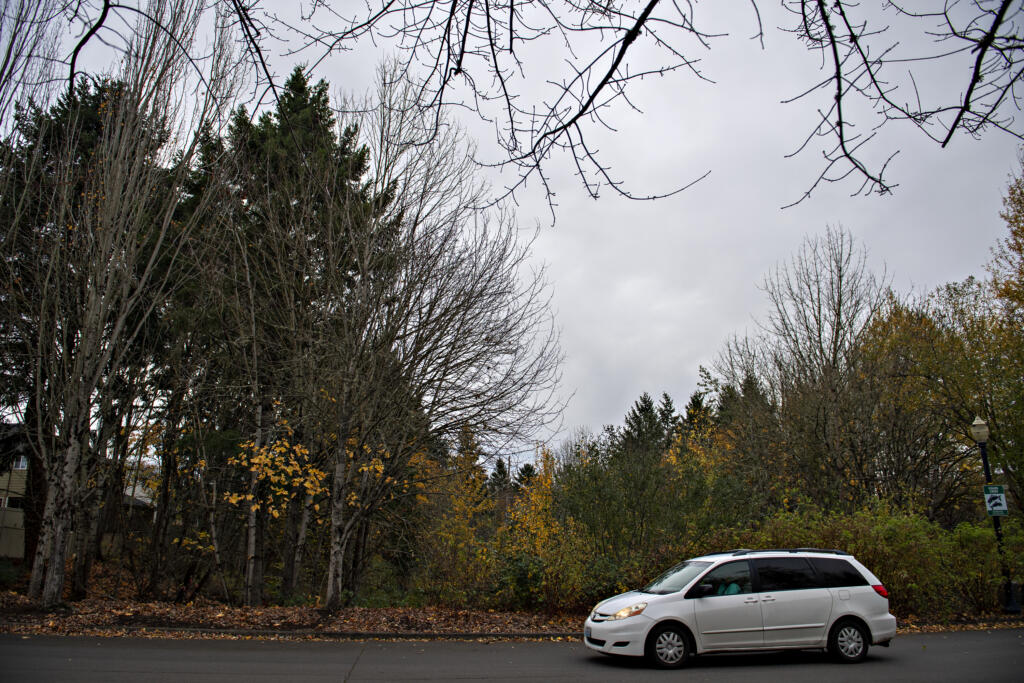Amid the bustle of a growing city and the pressures of climate change, urban foresters are rethinking how to expand Vancouver’s tree canopy.
City officials, who say immediate action is paramount for the future of its urban forest, are revising Vancouver’s urban forestry management plan. The plan, last revised in 2007, will serve as a 25-year roadmap for Vancouver’s tree management, pursuing environmental justice in the public sector and strengthening policies oriented toward urban forest preservation.
Unlike its original text, the newest draft establishes a goal to reach a 28 percent tree canopy by 2030, or roughly 3,000 acres of new cover. To meet this goal, there must be a total of 124,900 new trees planted by that year.
It’s an ambitious and, coupled with the reality of emerging developments, challenging feat.
“Part of making this happen is to inspire change and have everyone move in the same direction,” said urban forester Charles Ray. “Trees are living organisms, and we need to understand that.”
Growing a Tree Canopy
How Vancouver’s tree canopy could grow by planting an average of 5,000 trees per year on public and private land.
2023 — 19%
2024-2027 — 19.4%
2028-2032 — 20.3%
2033-2037 — 21.4%
2038-2042 — 23.6%
2043-2047 — 28%
Nearly 19 percent of Vancouver has a tree canopy — roughly 6,066 acres, or the size of 4,600 football fields. From this number, 15 percent of the city’s inventoried trees are maintained by the city and 85 percent are private.
One of the plan’s prevailing goals — more than increasing canopy or plantings — is updating policies to preserve existing urban forests, creating a no-net-loss strategy. Compared with other Washington jurisdictions, Vancouver is below average for tree restrictions and has the lowest percentage of landscape requirements in new construction, Ray said.
Nearly 200,000 people live in Vancouver, and it’s projected to continue growing. The Building Industry Association of Clark County projects the county’s population will reach 718,154 by 2045.
“How do we update code to create balance with competing priorities?” Ray mused. “We’re looking at how we elevate the natural environment during development.”
Generally, staff recommend enough space and quality conditions be set aside for trees in development, so they have ample room to grow. New construction must identify and eradicate invasive species before earning a permit, according to the draft plan, and developers must prioritize preserving and planting trees.
Vancouver’s 2007 urban forestry management plan laid the groundwork for what can be achieved through its revision, Ray said. Stakeholders and municipal departments were brought in unison toward urban forestry benchmarks. Planting programs were rebuilt, and others were created. Most notably, it involved urban forestry in the city’s building processes to prevent unnecessary tree removal.
Staff anticipate the revised plan to be adopted by fall and be added as an element of Vancouver’s comprehensive plan, requiring it to also undergo reviews by the city’s planning commission and the Washington Department of Commerce and the State Environmental Policy Act.
Eco, equitable climates
Lush, tall and green western hemlocks that have contributed to Washington’s identity as the Evergreen State are suffering from hotter and longer seasons. Western red cedars, another iconic native tree, are also diminishing and can only be planted in lowland areas where water is abundant.
The onset of high temperatures for prolonged periods are threatening existing trees that aren’t accustomed to such conditions, Ray said. Even further, concrete walkways, parking lots and roads absorb heat, exacerbating this effect — also known as an urban heat island.
Instead, heat-tolerant trees, such as giant sequoias, Douglas firs, oaks and ponderosa pines, remain while other species native to hot climates, such as Persian ironwood, are being introduced to the city.
These types of trees cast large patches of shade and are critical for future generations as temperatures rise. Yet Vancouver’s canopy reflects a map of neighborhoods dotted with disparities, prompting urban foresters to strategize how to achieve tree equity, or how to ensure trees are equally dispersed throughout the city.
The city’s effort is backed by a report compiled by American Forests, a nonprofit centered on conservation, that showed Vancouver scored 78 out of 100, the latter serving as the gold standard of equity. A disparities map, compiled using demographic and ecosystem data, showed people of color and those in poverty disproportionately have less canopy compared with Vancouver’s mean tree cover percentage.
Vancouver’s highest priority areas include Maplewood, Bagley Downs, Northcrest and Northwood neighborhoods.
The Washington Department of Natural Resources awarded $20,000 to Vancouver to revise its newest urban forestry plan, in large part because the city’s work was tapped as an environmental justice project.
Urban canopies are invaluable solely based on the influence nature has on humans’ quality of life and health, Ray said. Yet assessments by consultant PlanIt Geo place a savings estimate on Vancouver’s canopy, concluding it currently saves around $44 million annually by removing pollutants from the air, reducing stormwater runoff and sequestering carbon.
“Trees aren’t just a nicety, rather they’re also a utility,” Ray said.





